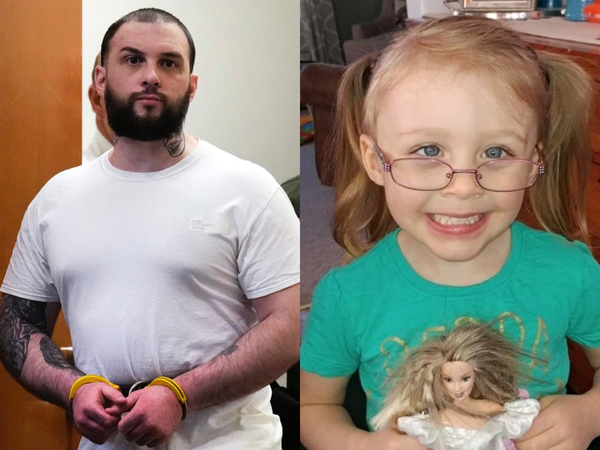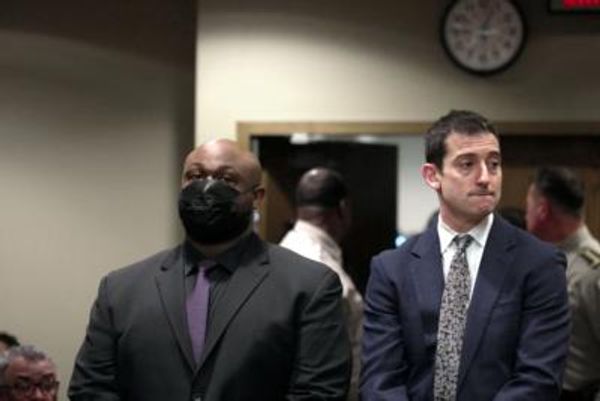
One of the surprises on the first day of the Wieambilla inquest was the suggestion that the three killers may have been suffering from shared delusions.
Counsel assisting, Ruth O’Gorman, introduced the idea when previewing the testimony of a forensic clinical psychologist.
“Dr Andrew Aboud is likely to give evidence that … Gareth, Stacey and Nathaniel were experiencing symptoms of an uncommon shared psychotic disorder known as “folie á trois” whereby they had identical persecutory and religious beliefs that met the psychiatric definitions for delusions,” she said.
Aboud has yet to appear before the inquest, but the idea that the trio were deluded raised eyebrows. Some extremism and conspiracy theory researchers had quietly expressed surprise over the Queensland Police and ASIO’s individual classification of the shooting as a “religiously-motivated terrorist attack” that was spurred on by a form of Christian extremism given the trio’s potpourri of fringe, radical beliefs. Now, a new element was being added to the list of influences on the Train’s beliefs and behaviours.
Does the idea that the attackers may have been deluded, suffering symptoms consistent with a psychiatric disorder, complicate the idea that this was a terrorist attack? To what extent might this disorder explain their actions? And what about their other extreme beliefs?
Experts who spoke to Crikey said it’s difficult to draw out the different factors at play and cautioned against overemphasising any one of the many influences on their behaviours.
Hamilton Kennedy is a delusion researcher completing his PhD at La Trobe University who has been following the Wieambilla case. He said that, while there are a lot of definitions of a delusion, “nobody’s got better than saying that it is an incredibly firmly held belief that most people think is false”.
There is some crossover between a delusion and a conspiracy theory. A conspiracy theory is the belief that a secret, powerful force is responsible for a harmful event. Not all conspiracy theories are delusions — many conspiracy theories are not firmly held — and not all delusions are conspiracy theories. But Kennedy believes that an extreme conspiracy theory is “almost inseparable” from a delusion.
He said that he’s noticed a tendency for some to use the pathology of delusion to exculpate people for their actions, but doesn’t agree that it always should. In the case of the Bourke Street driver James Gargasoulas, who killed pedestrians by running them down in 2017, his paranoid schizophrenia and associated delusions didn’t stop him from being declared fit to stand trial. Kennedy believes that delusions may sometimes absolve people from their moral and criminal responsibility, but not always.
Even using the lens of an inquest searching for solutions to a problem rather than assigning blame, Kennedy said that delusions are notoriously hard to deal with. Only half of all cases seem to respond to anti-psychotic medication. Complicating things further, delusions are an umbrella term for a symptom that takes many forms and has many causes.
“I think [cases like the Wieambilla attack] can be explained or expressed by looking at social, psychological and biological explanations,” Kennedy said.
Deakin University professor of global Islamic politics and terrorism expert Greg Barton said the initial response by police deciding what to call the attack was “clumsy”, a fumble that was magnified by a “silly” division between religious and politically motivated terrorism: “Terrorism, by definition, is political violence as people think they’re going to change the political system, whether it’s to make a caliphate or hasten the return of Christ.”
Like Kennedy, Barton doesn’t believe there’s a strict separation between a terrorist act and the act of someone with mental health problems, citing the classification of Lindt Cafe siege attacker Man Haron Monis as a terrorist despite his personality disorders. He said it’s counterproductive to give the impression that it’s people with mental health disorders who carry out these attacks.
When asked about how a potential explanation for the Trains’ violence as a deluded attempt to defend themselves would impact the idea that it was a political act to advance their beliefs, Barton argued that “even if there is a good argument for saying that the label of a terrorist attack does fit, it doesn’t mean there was a way of avoiding this violence.”
One important impact of the classification of the Wieambilla shooting as a terrorist attack is the level of resourcing and decision of what law enforcement teams will deal with the operation, Barton said.
“There are substantial consequences operationally in terms of the resources of — how many can we assign to look at issues? How many can we assign to do internet searches and look at digital footprint when you can make a reasonable case of saying we’re going to treat this as a counter-terrorism operation? Even if we don’t know for sure what we’ll find at the end, you’ve got a whole lot of resources available to you in state police, and you’ve got people in federal police and ASIO to go on board and help you,” he said. Barton said in a situation like this, Queensland Police have limited resources and, once classified as a terrorist attack, Wieambilla received a “whole of country” response.
The Wieambilla inquest is set to focus on the Trains’ motivations and behaviours leading up to the attack from Monday.







